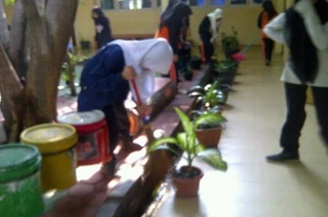
Environmental Education in Forming Attitudes of Environmental Care for Students
Abstract
Keywords
Full Text:
PDFReferences
Adisendjaja, Y. (2008). Pembelajaran pendidikan lingkungan hidup, belajar dari alam dan Pengalaman. http://file.upi.edu/Direktori/FPMIPA/JUR._PEND._BIOLOGI/195512191980021- P.pdf. [Accessed 15 january 2019].
Aini, H. A., & Zanaton, H. I. (2018). Lesson Study: An approach to increase the competency of out-of-field mathematics teacher in building the students conceptual understanding in learning mathematics. Journal of Educational Sciences, 2 (2), 1-13.
Azhar, Djahir, B., & Alfitri. (2015). Hubungan pengetahuan dan etika lingkungan dengan sikap dan perilaku menjaga kelestarian lingkungan. Jurnal Ilmu Lingkungan Undip, 13 (2), 36-41.
Campbel, J. W., Waliczek, T. M., & Zajicek. (1999). Relationship between environmental knowledge and environmental attitude of high school students. Journal of Environmental Education, 30 (3), 17-21.
Cheung, Y., & Lee, T.Y. (2010). Improving social competence through character education. Journal Evaluation and Program Planning, 33 (3), 255-263.
Diarni, J., Suarman., & Sri, K. (2018). Accomplishment motivation and soft skill related to learning achievement. Journal of Educational Sciences, 2 (2), 83-89.
Dagiliute, R., & Andrius, N. (2014). Changes of students’ environmental perceptions after the environmental science and biology courses. Journal Procedia-Social and Behavioral Sciences, 14(1), 325-330.
Eşi, M. C. (2015). Didactic options for the environmental education. The 6th International Conference Edu World 2014 “Education Facing Contemporary World Issues”. Journal Procedia-Social and Behavioral Sciences, (180):1380–1385.
Febrianawaty, Y., & Ahmad, M. (2016). Pengembangan instrumen penilaian sikap terhadap lingkungan yang valid dan reliabel bagi siswa SMA. Prosiding seminar Nasional XII Pendidikan Biologi FKIP UNS, 292-296.
Iswari, D., & Suyud, U. (2017). Evaluasi penerapan program adiwiyata untuk membentuk perilaku peduli lingkungan di kalangan siswa. Jurnal Ilmu Lingkungan, 15 (1), 35-41.
Kementerian Lingkungan Hidup. (2008). Panduan Materi Lingkungan Hidup. KLH.
Kementerian Lingkungan Hidup. (2014). Panduan Hari Lingkungan Hidup sedunia. KLH Republik Indonesia. Jakarta.
Kuhlemeier, H., Hubb, B., & Lagerweijg, N. (1999). Environmental knowledge, attitudes, and behavior in Dutch secondary education. The journal of Environmental Education, 30 (2), 4-14.
Lake. (2010). Examining trends in adolescent environmental attitude, beliefs and behaviors acroos 3 decades. Journal Environmental Behavior, 42 (1), 61-85.
Landriany, E. (2014). Implementasi kebijakan adiwiyata dalam upaya mewujudkan pendidikan lingkungan hidup di SMA Kota Malang. Jurnal Kebijakan dan Pengembangan Pendidikan, 2 (1): 82-88.
Ministry of National Education. (2010). Kurikulum dan Pembelajaran. Kementerian Pendidikan Nasional.
Muhammad, A. D. (2013). Pengelolaan lingkungan harus terintegrasi. Media Komunikasi lingkungan, Majalah Serasi Edisi 2/2013. KLH.
Norris, I. E., & Juliet, U. D. (2016). Impact of environmental education on the knowledge and attitude of students towards the environment. International Journal Of Environmnetal & Science Education, 11 (12), 5367-5375.
Pane, M. M., & Rina, P. (2015). The significance of environmental contents in character education for quality of life. Journal Procedia Social and Behavioral Sciences, (222) 244–252.
Redy, H. (2016). Evaluasi penerapan kurikulum berwawasan lingkungan hidup di jenjang sekolah menengah pertama. Tesis Ilmu Lingkungan, Universitas Lampung.
Sayyidah, N. S., & Zanaton, H. (2017). Integration of tauhid (Faith) element in biology education. Journal of Educational Sciences, 1 (1), 11-23.
Suarman., Hendripides., & Nurul Hikmah. (2018). Development of innovative teaching materials through scientific approach. Journal of Educational Sciences, 2 (2), 14-22.
Suharyat, Y. (2014). Hubungan antara sikap, minat dan perilaku Manusia. Jurnal region Universitas Islam 45 Bekasi, 1(3), 1-19.
Soekarjo, M., & Ukim, K. (2009). Landasan kependidikan konsep dan aplikasinya. Bumi aksara. Jakarta.
Tri, V. (2014). Pendidikan lingkungan hidup dalam membentuk sikap peduli lingkungan siswa di SMPN 4 Jombang. Jurnal Kajian Moral dan Kewarganegaraan, 3 (4), 1153-1167.
Tony, L., Anna., Kim, W., & Peter, P. (2003). Factors influencing young people’s Conceptions of Environment. Journal Environmental Education Research, 9 (1), 147-156.
Wan, R. (2016). Keterlibatan warga sekolah dalam pengelolaan lingkungan hidup di sekolah adiwiyata tingkat propinsi. Prosiding Seminar Nasional Pelestarian Lingkungan dan Mitigasi Bencana, Program Pasca Sarjana Universitas Riau, 334-342.
DOI: http://dx.doi.org/10.31258/jes.4.1.p.200-211
Refbacks
- There are currently no refbacks.
Copyright (c) 2020 Istiqomah Istiqomah, Suwondo Suwondo, L.N Firdaus

This work is licensed under a Creative Commons Attribution 4.0 International License.
Publisher: FKIP Universitas Riau












